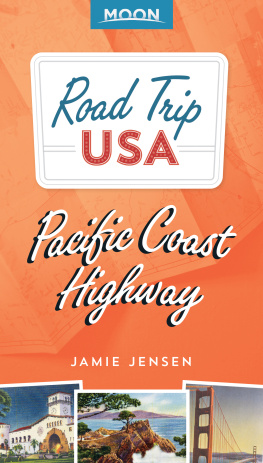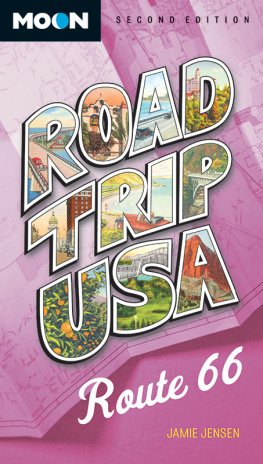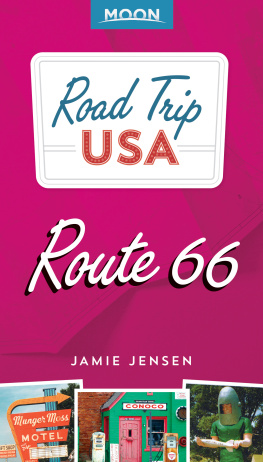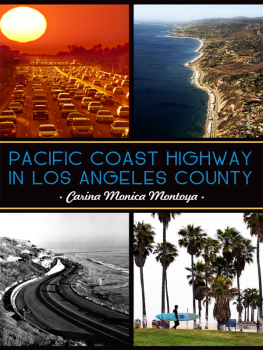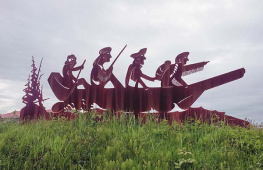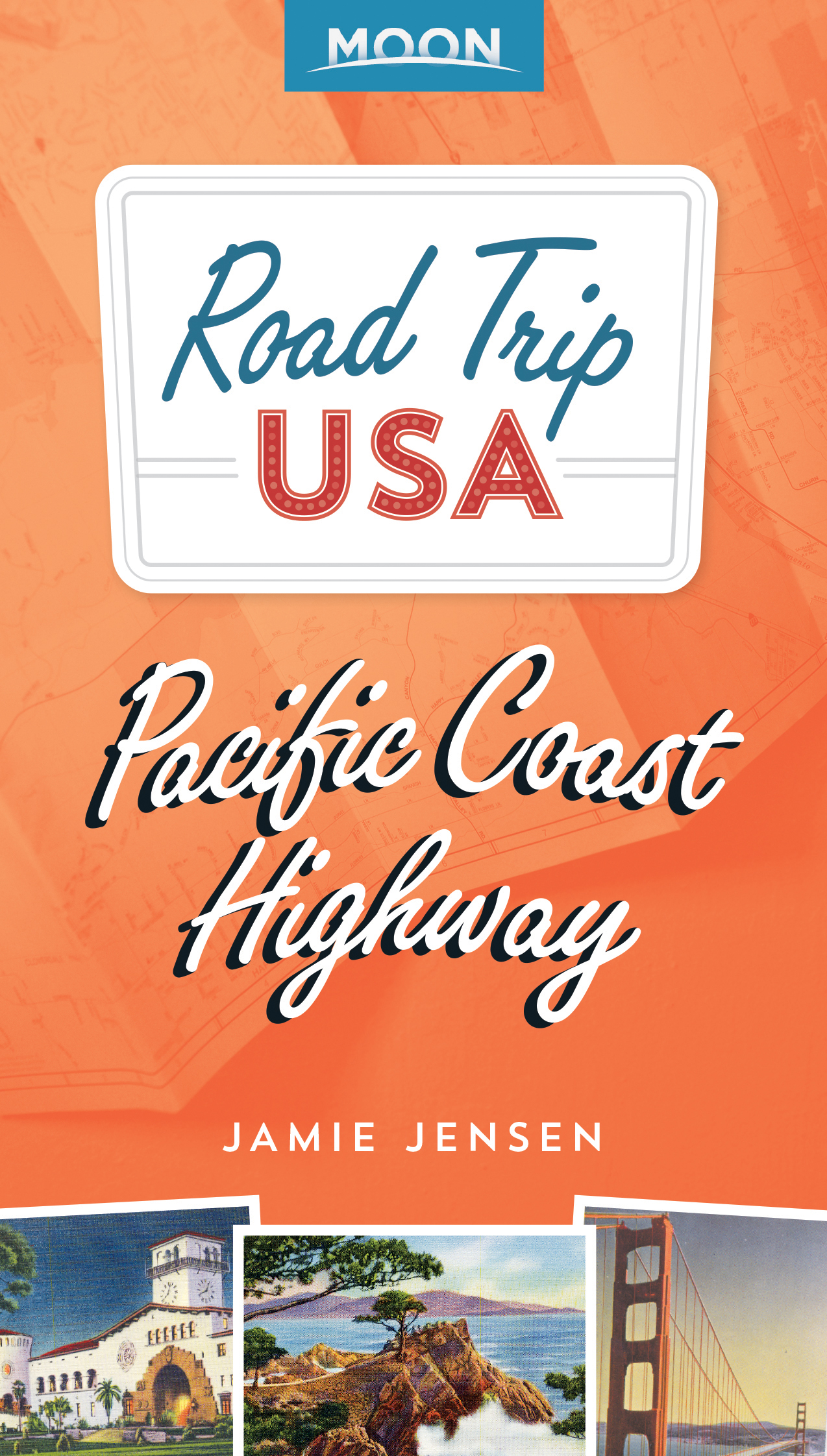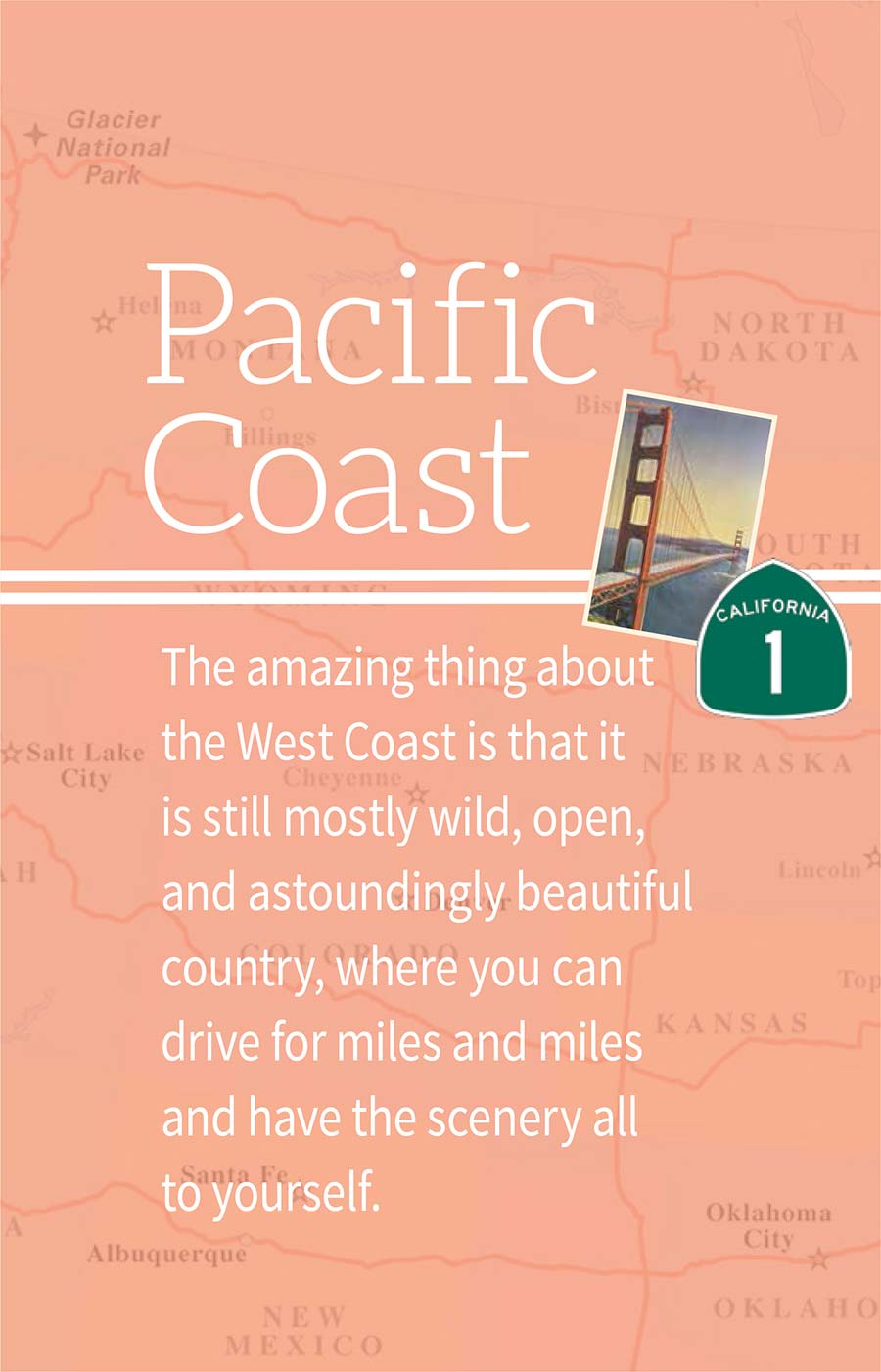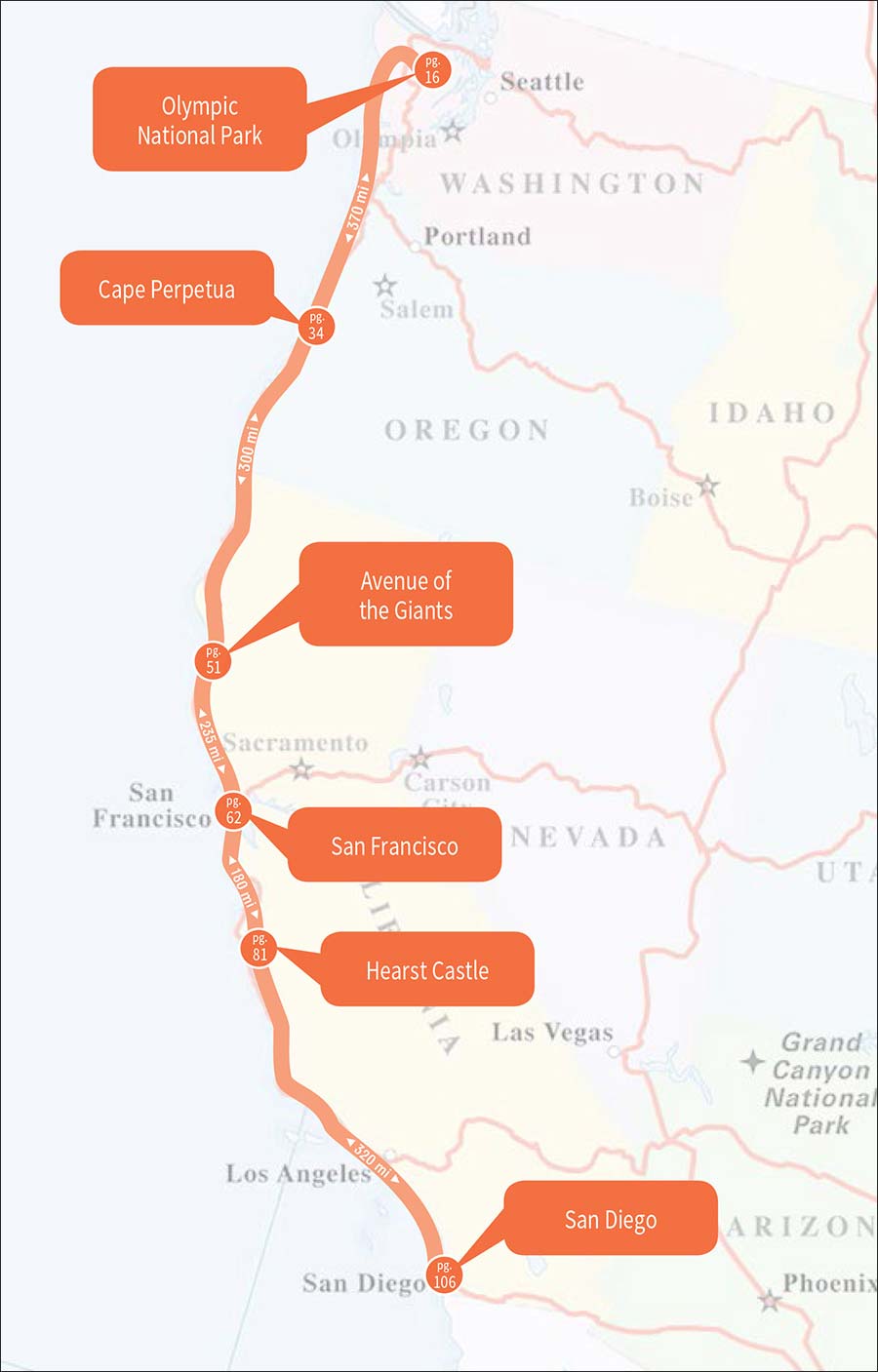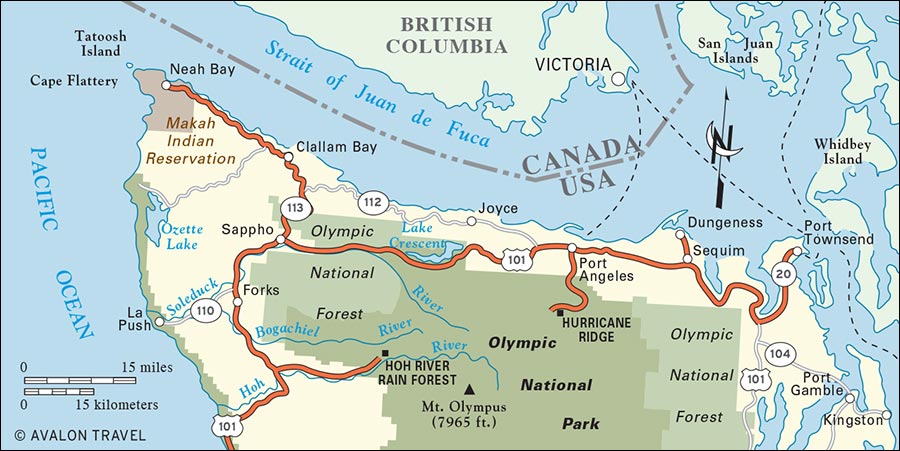Contents
Contents
Attractions
The amazing thing about the West Coast is that it is still mostly wild, open, and astoundingly beautiful country, where you can drive for miles and miles and have the scenery all to yourself.
Between Olympic National Park and San Diego, California
F or some reason, when people elsewhere in the country refer to the Pacific Coast, particularly California, its apparent that they think its a land of kooks and crazies, an overbuilt suburban desert supporting only shopping malls, freeways, and body-obsessed airheads. All this may be true in small pockets, but the amazing thing about the Pacific Coastfrom the dense green forests of western Washington to the gorgeous beaches of Southern Californiais that it is still mostly wild, open, and astoundingly beautiful country, where you can drive for miles and miles and have the scenery all to yourself.
Starting at the northwest tip of the United States at Olympic National Park, and remaining within sight of the ocean almost all the way south to the Mexican border, this 1,650-mile, mostly two-lane route takes in everything from temperate rainforest to near-desert. Most of the Pacific Coast is in the public domain, accessible, and protected from development within national, state, and local parks, which provide habitat for such rare creatures as mountain lions, condors, and gray whales.
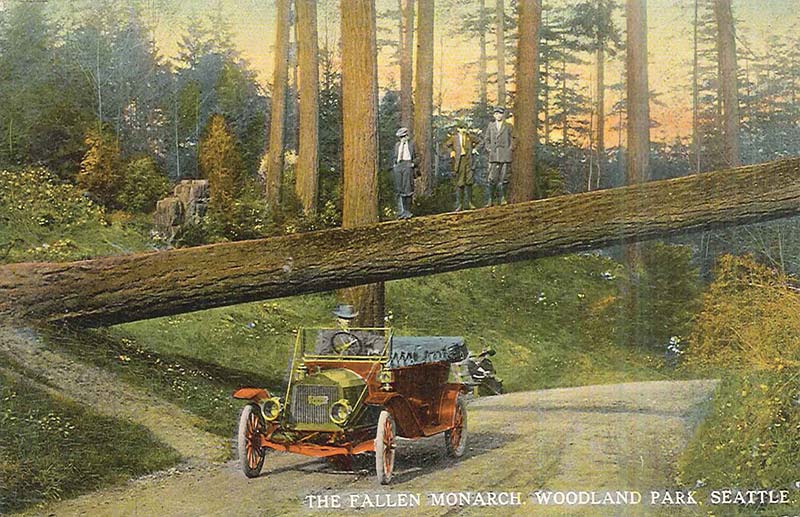
Heading south, after the rough-and-tumble logging and fishing communities of Washington State, you cross the mouth of the Columbia River and follow the comparatively peaceful and quiet Oregon coastline, where recreation has by and large replaced industry, and where dozens of quaint and not-so-quaint communities line the ever-changing shoreline. At the midway point, you pass through the great redwood forests of Northern California, where the tallest and most majestic living things on earth line the Avenue of the Giants, home also to some of the best (meaning gloriously kitsch) remnants of the golden age of car-borne tourism: drive-through trees, drive-on trees, houses carved out of trees, and much more. The phenomenally beautiful coastline of Northern California is rivaled only by the incredible coast of Big Sur farther south, beyond which stretch the beachfronts of Southern California. The land of palm trees, beach boys, and surfer girls of popular lore really does exist, though only in the southernmost quarter of the state.
Along with the overwhelming scale of its natural beauty, the West Coast is remarkable for the abundance of well-preserved historic sitesmost of which havent been torn down, built on, or even built aroundthat stand as vivid evocations of life on what was once the most distant frontier of the New World. While rarely as old as places on the East Coast, or as impressive as those in Europe, West Coast sites are quite diverse and include the Spanish colonial missions of California, Russian and English fur-trading outposts, and the place where Lewis and Clark first sighted the Pacific after their long slog across the continent.
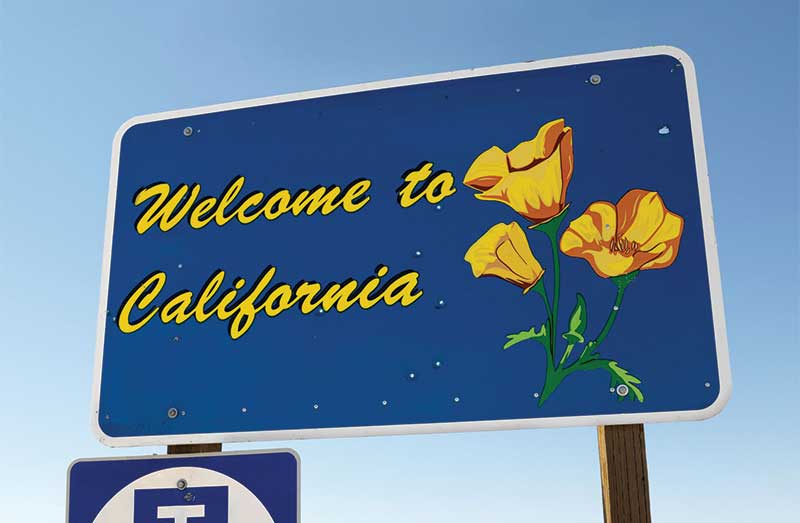
Last but certainly not least are the energizing citiesSeattle and Portland in the north, San Francisco in the middle, and Los Angeles and San Diego to the southwhich serve as gateways to (or civilized respites from) the landscapes in between them. Add to these the dozens of small and not-so-small towns along the coast, with alternating blue-collar ports and upscale vacation retreats, and you have a great range of food, drink, and accommodation options. Local cafs, seafood grills, and bijou restaurants abound, as do places to stayfrom youth hostels in old lighthouses to roadside motels (including the worlds first, which still stands in lovely San Luis Obispo, California) to homespun B&B inns in old farmhouses
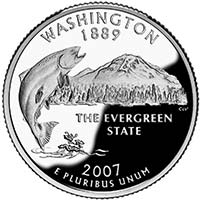
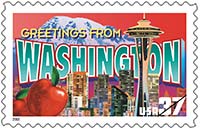
The coast of Washington is a virtual microcosm of the Pacific Northwest, containing everything from extensive wilderness areas to Native American fishing villages and heavily industrialized lumber towns. Starting at splendid Port Townsend, US-101 loops west around the rugged Olympic Peninsula, passing near the northwesternmost point of the continental United States while allowing access to the unforgettable natural attractionssandy, driftwood-strewn beaches; primeval old-growth forests; and pristine mountain lakes and glaciated alpine peaks, to name just a fewof Olympic National Park. The roadside landscape varies from dense woods to clear-cut tracts of recently harvested timber. Innumerable rivers and streams are perhaps the most obvious signs of the immense amount of rainfall (about 12 feet) the region receives every year. Scattered towns, from Port Angeles in the north to the twin cities of Grays Harbor on the coast, are staunchly blue-collar communities almost wholly dependent upon natural resourcesnot only trees, but also salmon, oysters, and other seafood. Though the tourism trade has been increasing steadily, visitor services are still few and far between, so plan ahead.
Though its not on the ocean, the Puget Sound port city of Seattle makes a good starting or finishing point to this Pacific Coast road trip.
Port Townsend
Few places in the world can match the concentration of natural beauty or the wealth of architecture found in tiny Port Townsend (pop. 9,113). One of the oldest towns in Washington, Port Townsend was laid out in 1852 and reached a peak of activity in the 1880s. But after the railroads focused on Seattle and Puget Sound as their western terminus, the town sat quietly for most of the next century until the 1960s, when an influx of arts-oriented refugees took over the waterfront warehouses and cliff-top mansions, converting them to galleries, restaurants, and comfy B&Bs while preserving the towns turn-of-the-20th-century character.
Port Townsend is neatly divided into two halves: Multi-story brick warehouses and commercial buildings line Water Street and the wharves along the bay, while lovely old Victorian houses cover the bluffs above. Its basically a great place to wander, but there are a couple of sights worth seeing, particularly the landmark

